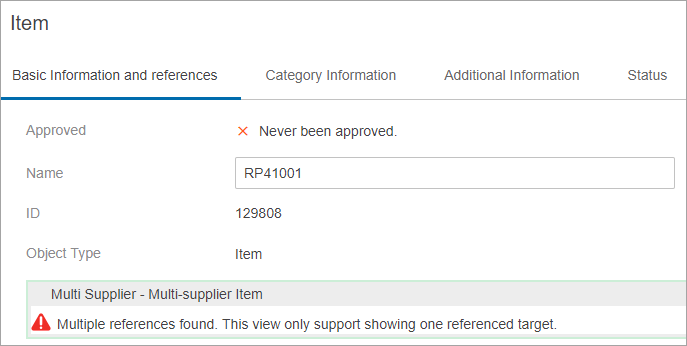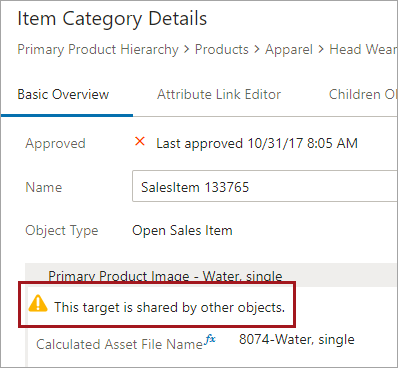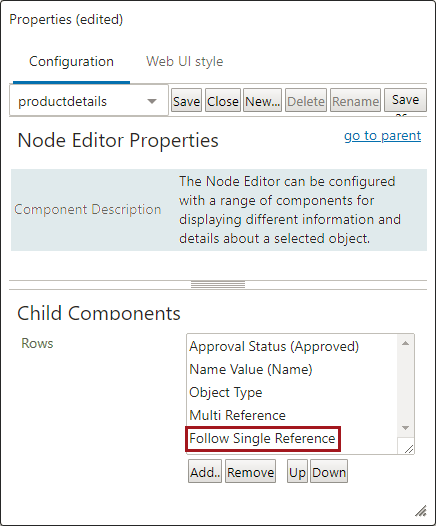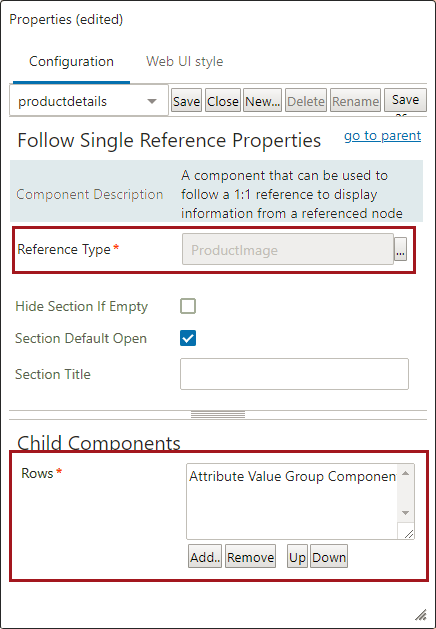This component allows users to edit a source object and an object referenced by the source object in one simplified interface. Using this component, users can view and edit data on referenced objects without navigating away from the source object.
Preconditions and Considerations
The Follow Single Reference component is intended to display data where the source of the reference has only one reference of that type.
If the source object has more than one reference of a given reference type, an error is displayed within that section and users cannot view or edit data on any of the referenced objects using that reference type.

However, the target object may also be referenced by more than one source object, in which case a warning is displayed to the user to help prevent unintended data changes.

Before configuring the Follow Single Reference component, it is recommended that the data model be verified to ensure that the component is being used to display references for which the source object has only one reference of that type.
Note: When using the Follow Single Reference component in conjunction with Approve actions, it is necessary to approve the target object(s) prior to approving the source object. It is therefore recommended that the Run Business Action component be used in place of the Approve Action so that a business rule handles approval of the target object(s) (in addition to approval of the source object).
Follow Single Reference Configuration
The Follow Single Reference component can be added to any Node Editor. If multiple instances of the component are configured on a Node Editor, users can easily click the small arrow button that displays on the component to collapse or expand each instance as needed.
From a Node Editor, add the Follow Single Reference component.

Double-click on the 'Follow Single Reference' row to configure it.
On the 'Follow Single Reference Properties' screen in the designer are five parameters, two of which are mandatory. The mandatory parameters are called out in red boxes in the screenshot below.

- Reference Type: A mandatory parameter, select the reference type used to reference the objects whose attributes will be displayed using the component.
- Hide Section If Empty: When checked, the component only displays when the source object being viewed references objects using the reference type selected for the 'Reference Type' parameter.
- Section Default Open: When selected, the section will initially display as expanded.
- Section Title: Enter text to display as the title of the component should be different than the reference type name (the default text).
- Rows: Select one or multiple components for this parameter, and configure each as needed. It should be noted that the primary use case for this component is to make attributes from a referenced object available to edit when reviewing a source object's data. Adding metadata attributes (attributes on the reference itself), for example, can create unforeseen outcomes that can negatively affect the performance of the Node Editor.